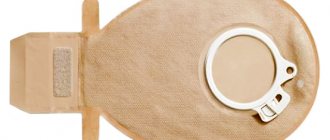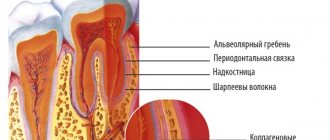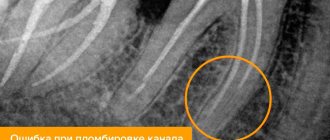Plugs in the throat are accumulations of pus that form in the recesses of the palatine tonsils. Purulent accumulations and, as a result, the development of inflammatory processes cause pain in the oral cavity and complicate swallowing food. In case of exacerbation, the infection can spread throughout the body. It is important to take all necessary measures in time to eliminate the disease.
To avoid vision problems and diagnose possible diseases in time, it is important to regularly visit an ophthalmologist. Moreover, it is better to start preventive visits to the doctor from childhood. The fact is that some vision defects can be inherited or appear during the formation of the fetus in the womb. The earlier a certain pathology is detected, the more effective treatment can be prescribed.
What causes inflammation of the tonsils (tonsillitis)
The tonsils (tonsils) become inflamed when their lymphoid tissue, which is involved in the formation of immunity, is unable to cope with the infectious agent. In this case, adults and children develop acute tonsillitis (tonsillitis), which can develop into chronic.
Other causes of chronic tonsillitis include [2]:
- frequent and untreated pharyngitis;
- prolonged difficulty in nasal breathing due to curvature of the nasal septum, infectious diseases of the nasal mucosa and paranasal sinuses (rhinitis, sinusitis, the occurrence of polyps, etc.);
- diseases of teeth and gums;
- allergic reactions.
As a result of tonsillitis, inflamed tonsils turn into a source of infection, which leads to decreased immunity and frequent respiratory diseases and can cause complications of existing chronic diseases, the development of allergies and serious diseases of the cardiovascular system, liver, kidneys, and joints [2].
Causes of purulent plugs in the throat
- Chronic inflammation and diseases of the nasopharynx
Sinus bacteria can be released into the throat and into the tonsils, increasing the likelihood of pus.
- Insufficient oral hygiene
Promotes an increase in the number of bacteria and their activity, because of this the immune system weakens and inflammation develops. Also, food particles can enter the enlarged lacunae of the tonsils and create an even more favorable environment for the proliferation of bacteria.
- A sharp decrease in the body's immunity
When the human body's defenses are weakened, they cannot resist pathogens and inflammation increases. Even an increase in the activity of normal microflora in the oral cavity often leads to negative consequences for the tonsils.
- Nutritional Features
A monotonous diet with a predominance of protein can reduce the body’s protective properties and even contribute to the development of inflammatory processes in the tonsils. Vitamin deficiency can also stimulate inflammation and reduce the body's immunity as a whole.
- Tonsil injuries
Pathogenic bacteria can enter the tonsils through ordinary wounds caused by a fork or a bone. The wound channel is a suitable place for the successful and rapid development of infection.
A purulent plug in the throat can have either a single or complex cause. In some cases, the causes include: bad habits, stress, hypothermia, heredity, and dental diseases. Often, a deviated nasal septum can contribute to the development of a plug.
Sometimes patients mistake purulent plugs for stuck pieces of food and do not attach much importance to this problem. It is important to understand that food cannot get stuck in the tonsils in principle, and the presence of the symptoms described above indicates an urgent need to consult an otolaryngologist.
Symptoms of chronic tonsillitis
The main symptoms of the disease include [2]:
- elevated temperature for a long time, especially in the evening;
- headache, sore throat and joint pain;
- loss of appetite;
- bad breath;
- inflammation of the cervical and submandibular lymph nodes;
- frequent relapses of sore throat.
When examining the throat, the ENT will find [2]:
- enlargement, looseness, swelling of the tonsils;
- accumulation of plugs (white cheesy mass) in the lacunae of the tonsils.
Congestion in the throat: symptoms
- Sensation of a foreign body in the throat
Constant purulent discharge from the plug causes irritation of the nerve endings of the mucous membrane and can provoke a dry cough.
- Pain while swallowing food
Purulent formations can create physical obstacles in the throat for pieces of swallowed food and cause pain. Also, biologically active substances make the nerve endings of the mucous membrane much more sensitive.
- Bad breath
Bacteria and fungi caused by inflammation produce hydrogen sulfide. It becomes the cause of the characteristic odor, which cannot be eliminated with the help of usual hygiene (toothpaste, chewing gum).
- Presence of white spots
This symptom is relevant for cases where purulent plugs are located at the back of the throat. They look like thick deposits and are clearly visible even with the naked eye.
- Swelling of the tonsils
The infection often causes swelling of the tonsils and a very sharp increase in their size. The symptom can be determined with the naked eye.
- Ear pain
The hearing organs are closely connected to the throat by nerve endings. When purulent accumulations form in the recesses of the palatine tonsils, this often affects nearby organs.
Indications for tonsillectomy
After collecting anamnesis and a complete examination, the doctor will prescribe a tonsillectomy if there is [1, 2]:
- frequent relapses of tonsillitis (if we talk about children - from seven exacerbations per year to five or three exacerbations over two and three years, respectively), convincing of the ineffectiveness of conservative treatment;
- decompensated form of chronic tonsillitis, when the tonsils are unable to perform their protective functions and inflammation leads to diseases of other organs;
- chronic tonsillitis with toxic-allergic phenomena, when the risk of complications and other infectious-allergic diseases increases;
- sleep apnea syndrome, when inflamed tonsils cause dysfunction of breathing and swallowing;
- purulent complications in the tonsils themselves and peritonsil tissue;
- Marshall syndrome (PFAFA syndrome) is a regularly recurring fever with complications that occurs mainly in children.
There is a lump in the throat: reasons
Many people feel a lump in their throat after eating, the reasons for this may lie in:
- formation of an abscess in the pharynx,
- formation of neoplasms,
- pathologies of the thyroid gland,
- dysfunction of the cervical spine.
If you feel a lump in your throat with nausea, the reasons for this most often lie in diseases of the gastrointestinal tract.
Signs such as pain when swallowing, a feeling that a foreign object is stuck, suffocating and causing other types of discomfort are observed:
- with gastritis;
- with reflux esophagitis;
- when a hernia forms in the esophagus.
In addition to the fact that there is a lump in the throat, patients are often annoyed by:
- pain in the chest in the center or right, particularly in the esophagus, with difficulty swallowing and breathing;
- belching after eating;
- severe heartburn;
- heaviness in the stomach;
- nausea;
- feeling that there is air in the stomach;
- an unpleasant sour taste in the mouth and a sore throat provoked by it.
Sign up for the First Family Clinic of St. Petersburg to find out how to get rid of a lump in your throat. We offer you a full range of diagnostic measures and consultations with high-level gastroenterologists, thanks to which we can accurately determine the reasons why there is a lump in the throat. We are waiting for you at the multidisciplinary clinics of the Primorsky and Petrograd districts.
Contraindications to tonsil removal
The operation is impossible if the patient [1, 2, 3]:
- diseases of the blood system that occur with increased bleeding (hemophilia, agranulocytosis, leukemia, leukemia, hemorrhagic diathesis and others);
- vascular anomalies of the pharynx (angiodysplasia, aneurysms, submucosal pulsation of the vessel);
- active form of tuberculosis;
- decompensated form of diabetes mellitus;
- severe progressive diseases of the cardiovascular system, kidneys, liver, lungs;
- severe forms of mental disorders.
There are also relative contraindications that can negatively affect the outcome of the operation - therefore, tonsillectomy should be postponed until they are eliminated or completed [1, 2, 3]:
- acute infectious diseases;
- menstruation;
- caries;
- inflammation of the gums;
- pyoderma (pustular skin diseases);
- exacerbation of chronic diseases;
- exacerbation of dermatitis;
- pregnancy starting from the 7th month.
Preparing for surgery
The decision to remove the palatine tonsils, as well as the choice of treatment tactics and anesthesia, is made by the otolaryngologist after collecting anamnestic data and conducting a thorough clinical examination [2]:
- taking tests (general blood and urine analysis, biochemical blood test, determination of blood group and Rh, coagulogram (assessment of blood clotting), etc.);
- other examinations (electrocardiography, fluorography, etc.);
- in the presence of pathologies, consultation with specialized specialists and additional examinations;
- prescribing medications that reduce the risk of bleeding, and, if necessary, other drug therapy and taking sedatives.
This treatment method has been used for more than 2000 years and remains one of the most common surgical interventions to this day.
During the time that has passed since the first tonsillectomy in children, surgical tactics, pre- and postoperative preparation of the patient, as well as the possibilities of pain relief have changed significantly. Polunina T. A, Ph.D., ENT, employee of the Scientific Center for Children's Health of the Russian Academy of Medical Sciences, Moscow [1]
A few days before surgery, you must give up alcohol, smoking, and eating heavy, spicy, and fatty foods. You should not eat or drink directly on the day of surgery.
Surgical options
Today there are many methods for removing tonsils, but the most common include [1, 3]:
- Classic (standard) tonsillectomy. Enucleation of tonsils using surgical instruments.
- Extracapsular tonsillectomy. The doctor, using scissors and a loop, cuts off the palatine tonsil along with the capsule, then applies sutures. The main disadvantage of this method is the high risk of bleeding both during and after surgery.
- Using an ultrasonic scalpel. Thanks to high-frequency sound vibrations, the temperature of surrounding tissues remains low enough to avoid serious damage.
- Coblation (bipolar radiofrequency ablation). This method has become widespread in otorhinolaryngology due to the minimization of pain and postoperative risks, as well as the reduction of the recovery period. This is due to the absence of thermal effects: the radiofrequency energy used separates the molecular bonds between tissues, allowing them to be cut almost painlessly and bloodlessly.
Possible complications after tonsil removal
Thorough preoperative examination and preparation, modern equipment and adherence to doctor's recommendations during rehabilitation after tonsil removal can minimize the risk of complications after tonsillectomy. However, the following cannot be excluded [2]:
- bleeding, which can occur both directly during surgery (primary) and several hours and days after tonsillectomy (secondary);
- sore throat, difficulty swallowing;
- taste disturbance;
- inflammation of the wound;
- increased body temperature;
- swelling of the soft tissues of the neck and larynx.
Therefore, the first few days after removal of the tonsils, the patient most often remains in a hospital under the supervision of specialists, where if his health worsens, he will be provided with qualified assistance.
Disease prevention
You can prevent sore throats and avoid their recurrence by following simple tips on preventive measures. It is important to treat teeth and gums in a timely manner, and do not forget about daily hygiene and rinsing your mouth after eating. Every day you need to drink at least two liters of water, monitor the condition of your nasal cavity and dress for the weather.
A complete cessation of smoking will be very useful; nicotine smoke toxins affect lymphoid tissues and can aggravate the patient’s condition. The same applies to alcohol, which burns the tonsils and aggravates the inflammatory process. It is important to take care of proper and balanced nutrition so that the body receives a complex of important vitamins and elements.
If you have already identified purulent plugs in your throat, be sure to consult a doctor as soon as possible. Timely assistance from a specialist will help avoid complications dangerous to the body!
Postoperative period after tonsillectomy
The duration of the recovery period after tonsillectomy directly depends on the chosen method of operation; the wound itself heals on average in 3–4 weeks. For rehabilitation to be successful, it is necessary [2]:
- follow all doctor's recommendations;
- stick to bed rest for the first few days;
- limit physical activity, visiting the sauna, hot bath, swimming pool;
- take prescribed medications;
- for the first 5–7 days, avoid eating irritating foods (hot, cold, sour, spicy), carbonated drinks;
- Carefully monitor your condition and, if any deviations or complications appear, seek the help of specialists.
After surgery to remove the tonsils as a source of infection, the frequency of colds and the risk of developing serious complications are reduced. Therefore, if conservative methods of treating tonsillitis do not produce results, it is necessary to contact a specialist and discuss the possibility of surgery.









